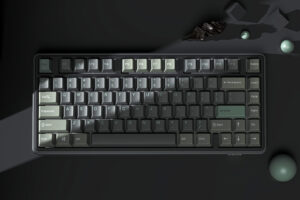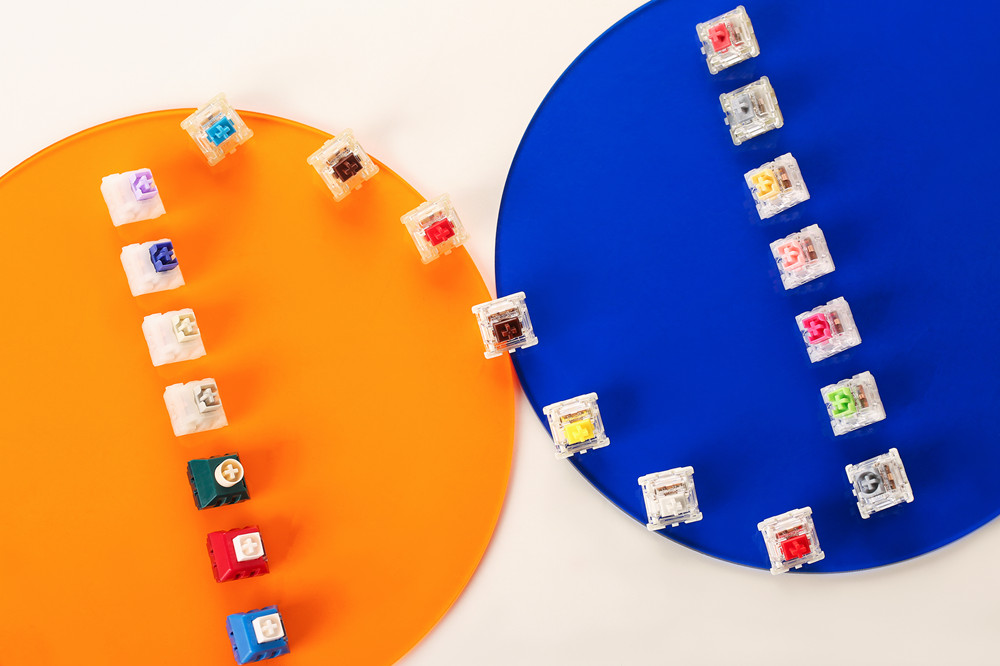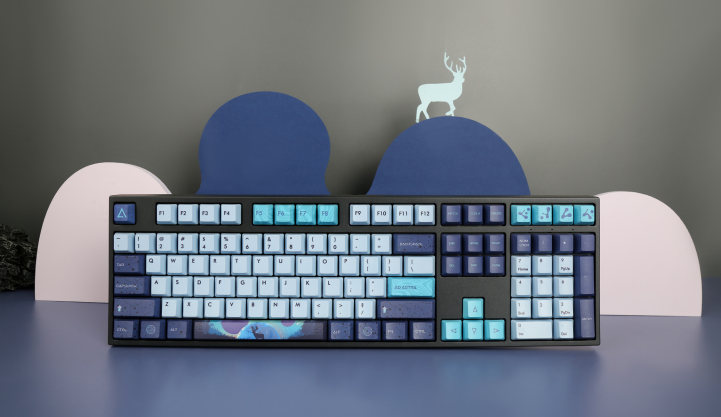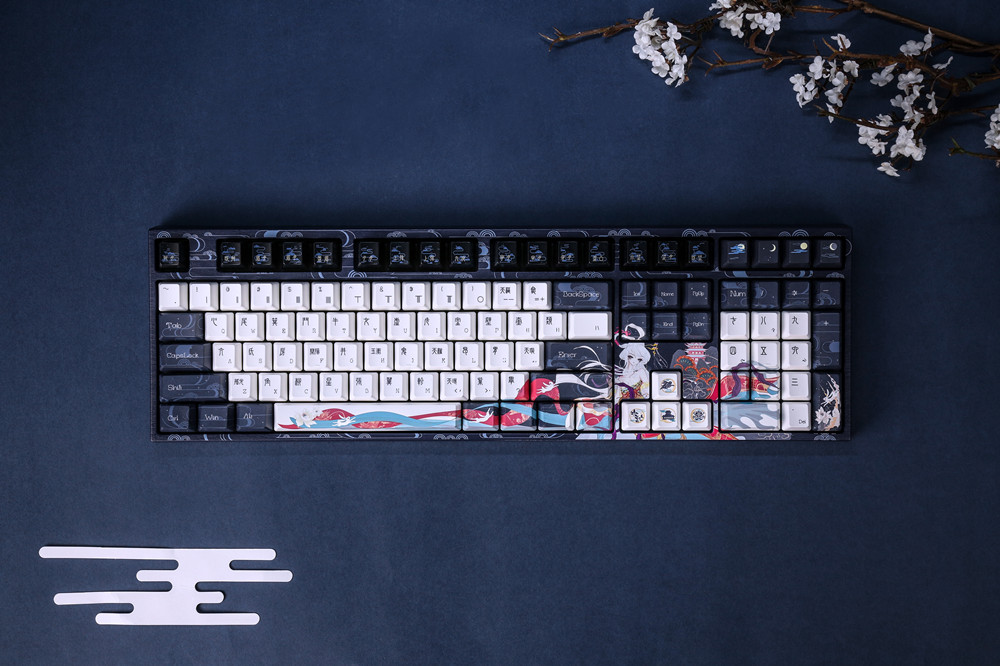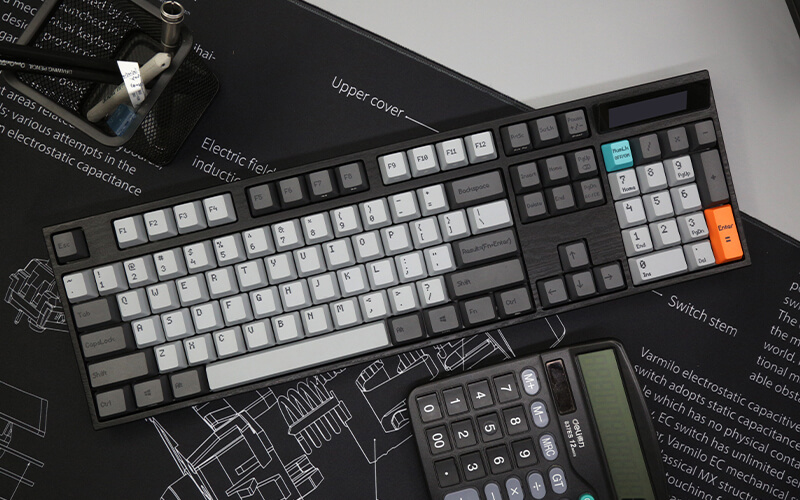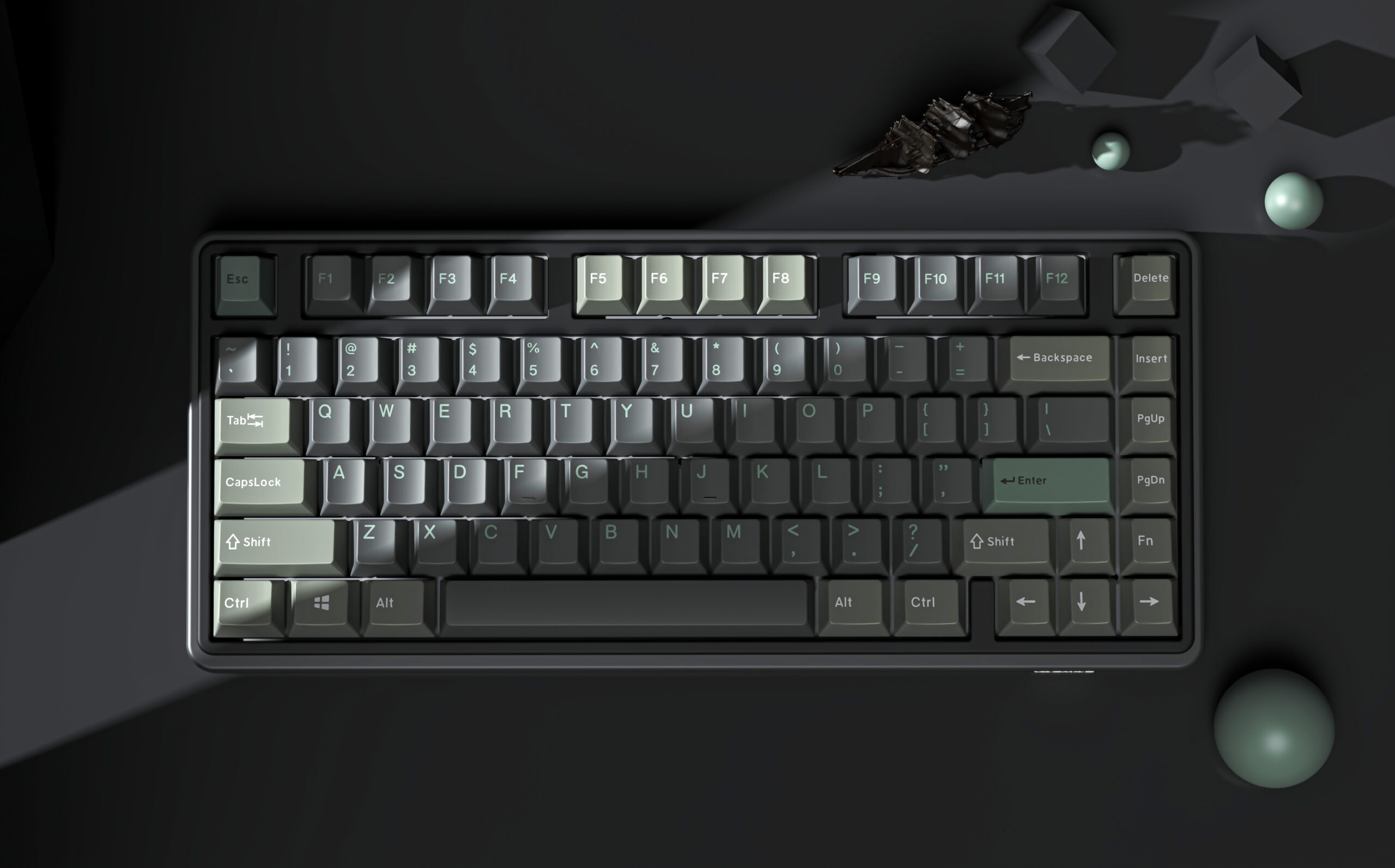Many of the keyboards that come with laptops and desktops suck. Mechanical keyboards, so-called because they have actual mechanical switches under each key, are more user-friendly, more robust, and more flexible than a conventional membrane, butterfly, or scissor-switch keyboards. And for people who spend the entire day typing, scripting, or gaming, it can be relaxing to configure the height, the buttons, the keycaps, the interface, and even the backlight to your exact needs.
If you’re interested in mechanical keyboards but don’t know where to start with all the terms and choices, start here. And if you know the fundamentals but want to go a bit further, this post is going to steer you in the right direction.
How does a mechanical keyboard work?
The keyboards that come with desktop computers are typically a variant of the rubber dome style. You press the switch, and the dome touch triggers a button. The disadvantage is that the rubber membranes are mushy, inconsistent, and you’ve got to drive them down every time. Laptops and their scissor switches aren’t any different. They deliver a little tactility, but over time, low travel and mushiness are also grating.
A mechanical keyboard is a type of keyboard with switches that actuate before the bottoming out. Cherry-style metal touch switches, for example. When you press the key down, the stem will travel into the housing and allow metal connections to be reached. That’s what fires off any letter. Some types of switches are known to be mechanical but have entirely different mechanisms.
The switch is a simple device. It consists of a stem held up by a spring that attaches to the keycap. That causes the branch to go down when you press down on the keycap, allowing two electric contacts to touch but, since the keys make a spring-loaded switch go off, mechanical keyboards have a somewhat different feeling than membrane keyboards. If pressed down, you can sense or hear a distinctive sound. This means that when a key has been pressed, you will already know – there’s no second-guessing about whether a push has truly gone through.
In contrast, membrane keyboards appear to sound “mushy” when they add pressure to a rubber glove, and there is no definite click to activate a turn. Typing membrane keyboards ensure that you are more likely to make mistakes.
Switches in mechanical keyboards are categorized as either tactile or linear. The linear switch must be pushed down all the way, while the tactile switches are triggered around halfway down, which ensures that they are activated more rapidly, with less typing effort.
However, the primary point is that mechanical keyboards let you type quicker by pressing on each key you can feel and typically hear.

Benefits of mechanical keyboard
- 1. Optimized Typing Experience
With a mechanical keyboard, the typing process has been greatly optimized. Before the mechanical keyboard’s arrival, most people don’t find typing fun activity as they do these days. In fact, much of the time, people have neglected their typing expertise due to hard work or typing a laptop or a membrane keyboard that doesn’t offer a lot of finger sensations. As the mechanical keyboard came in, the situation begins to change.
When you type on a mechanical keyboard, you will realize your feedback as your fingers and brain gets signals and reactions that make your fingers look more nimble. With this, your typing accuracy gets much better than before, as you will develop speedy typing. Another thing when you’re on a mechanical keyboard is that your hands and fingers won’t feel so exhausted. Hence, Mechanical keyboards give an optimized typing experience.
- 2. Efficiency
Some people will talk about their typing being more effective on a mechanical keyboard. If you can type a lot and efficiently on a mechanical keyboard, and your fingers and wrists are not easy to get tired of, typing would be more effective. The entire thing is practical.
Meanwhile, switches are the main reason that typing is going to be efficient. There are various types of mechanical switches. Many of them have unique and excellent features. The switches in black and red are linear. Feedback isn’t that noticeable. Brown switches are perfectly ideal for use in the workplace. The brown mechanical keyboard switch is tactile and very silent. The fingers will get feedback as each keystroke is pressed.
Sound is one of the most critical things when you select a mechanical keyboard in your office. You’ve got to remember your neighbor. You might like the blue switches. They’ve got “clicky” echo feedback, which might be a bit distracting in the workplace. Suppose you don’t want to buy a new mechanical keyboard or change the switches on your own. In order to dampen the sound, you can connect O rings to your blue switches, and then you can still use the blue switch mechanical keyboard in your office.
The Best Office Mechanical Keyboard
Varmilo Keyboard with EC Switches V2 is one of the best mechanical keyboards available for office use. It provides an outstanding typing experience, from its elegant and sturdy nature to its amazingly smooth feel and pleasant sound. The critical feature of this experience is the company’s electrostatic capacitive switch, which operates by measuring the difference in electrostatic capacity instead of using physical interaction with most mechanical switches. The effect is a stable, fast, and extremely responsive transition with a potentially limitless lifespan, Varmilo says.
The Varmilo keyboard with EC Switches V2 is a new keyboard from a Chinese manufacturer. Although it’s a brand that you may not have heard of, Varmilo has built an enviable reputation among keyboard enthusiasts, thanks to its reliable build quality and stylish designs. In reality, Varmilio is self-styled as a ‘keyboard artist,’ and you can quickly see why from even a cursory glance at its items, like the Varmilo Keyboard with EC Switches V2.
Instead of going all-out in the stakes manner and adding all sorts of extra bells and whistles, as many gaming-focused keyboards do, Varmilo has a classic keyboard concept. And this keyboard, complete with its own electronic keys, does something completely different. For buddies, this might be what you’re looking for.

Features
As ‘keyboard artists,’ the Varmilo keyboard concept with EC Switches V2 is one of its key points of sale, and Varmilo has done a fine job. The layout is a well-known 108 key style with an ANSI layout. It is only accessible to English language users in the U.S QWERTY. For those in the US, that’s perfect. Still, for people in the UK, for instance, that means you’ll need to either set your PC to the US-style, learn a (slightly) new way of typing, or keep the layout in Windows 10 the same, and just note that certain letters, such as ‘and @, are in different positions from where they are shown on the keyboard.
With the ‘Moonlight’ style, the keyboard cover is black, with a nice wood-like finish, while the keys are a combination of light and dark gray and turquoise. It’s definitely appealing, and looking at the Varmilo website, there are other beautifully streamlined styles, while some are more lavish. There’s no LED backlight for all the buttons, but just the caps lock and the num lock keys have the lights (to indicate when they are toggled).
As far as additional buttons are concerned, the Varmilo keyboard with EC Switches V2 makes it easy, with four keys above the Numpad, to access a media player, an email client, a calculator, or a Windows Explorer.
F7 to F12 keys are also duplicated as feature keys for media controls. Yeah, that’s your bunch. For people expecting additional, configurable buttons, look elsewhere.
However, for people who want to have a solid, stable keyboard that doesn’t over-complicate things, this dedication to convenience is welcome. The Varmilo keyboard with EC Switches V2 comes with Varmilo’s own mechanical switches – the EC Switch V2, which the manufacturer says has a longer lifetime, improved reliability, and a superior typing feel than the Cherry MX switches used in many keyboards.
The EC switch V2 is currently available in three versions:
Daisy

Sakura

Rose

They are all linear, meaning that they’re going straight down without a click or a tactile bounce. A tactile Ivy switch is in production that the firm believes would be identical to a Cherry MX Blue switch. The Sakura has an actuation force of 45 grams with an actuation point of 2 millimeters and an actuation force of 60 grams at the bottom of 4 mm. The EC Daisy V2 actuation power is 10gm lighter, and the EC Rose V2 is 10gm heavier than the Sakura.
However, if you’re not used to linear switching, it could require some time to adapt since there’s no tactility. And the EC Sakura V2s travel so effortlessly that, even coming from another linear keyboard. In addition to the steady actuation, the keys are not wobbling at all. Even the spacebar has a strong, shake-free feel about it. The keys also have the most satisfying clack sound to them. You’ll hear a spring sound of scratching on certain electronic keyboards, but it’s not here: it’s just a silent clack.
Lastly, this keyboard is shaped like a tank. It might have a natural wood plastic shell, but it’s still got some strong heft at 2.8 pounds (1.2 kg). For both the weight and the rubber legs (there are also flip-out legs in the back), this keyboard really doesn’t move unless you want it to. The Mini-USB port on the far right side in the back and the provided cable will connect you to your computer. It’s completely compliant with Windows, but macOS users would miss access to its shortcut keys.

